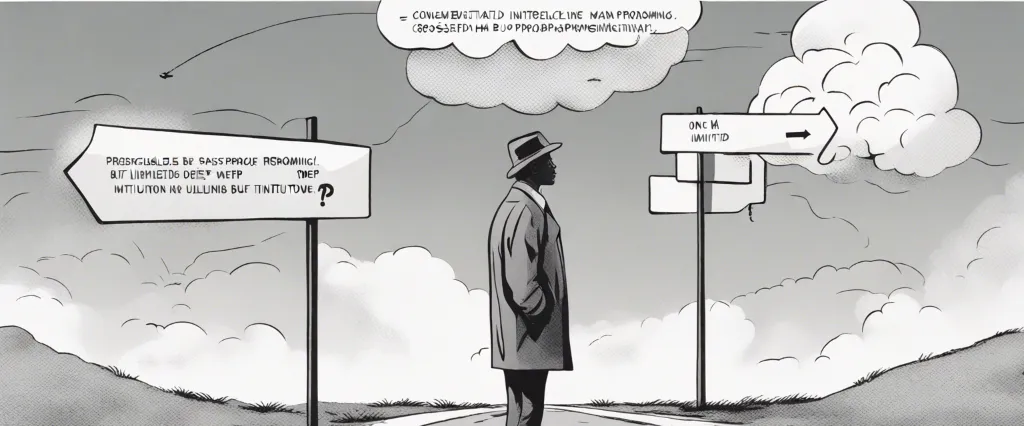In “The Innovator’s Solution,” acclaimed author Clayton M. Christensen offers groundbreaking insights into how companies can successfully navigate the challenges of disruption and drive innovation in a rapidly changing business landscape. Drawing from extensive research and industry case studies, Christensen presents a collection of innovative strategies and principles that enable organizations to seize new opportunities and sustain long-term growth. As a renowned business professor at Harvard Business School, Christensen’s expertise in the field of disruptive innovation has revolutionized the way entrepreneurs and executives approach business development and adapt to market shifts.
Chapter 1: Understanding Disruptive Innovation
In Clayton M. Christensen’s book The Innovator’s Solution, the first chapter delves into the concept of disruptive innovation. The chapter provides an overview of the core principles and approaches organizations need to understand in order to successfully navigate disruptive market changes and capitalize on opportunities.
Christensen introduces the concept of sustaining innovation, which is the improvement of existing products or services to meet the needs of established customers. Organizations often focus on sustaining innovations, enhancing their offerings to maintain their market position. However, disruptive innovation follows a different trajectory. It refers to the introduction of new products or services that initially cater to niche or underserved markets but eventually develop into significant competition for established companies.
The chapter emphasizes the importance of recognizing disruptive innovation as a distinct phenomenon that requires a separate strategy from sustaining innovation. Christensen highlights three primary characteristics of disruptive innovations: they often target low-end or new-market footholds, they initially offer lower performance compared to existing solutions, and then they improve at a faster pace to eventually overtake established players.
The author emphasizes that failing to understand and respond to disruptive innovation can lead to the downfall of even the most successful companies. Established organizations often struggle to adopt disruptive technologies due to their focus on sustaining innovations and their reluctance to cannibalize existing business models. However, Christensen asserts that disruptive innovation can be successfully navigated by adopting the right mindset, strategic choices, and management frameworks.
Overall, Chapter 1 serves as an introduction to the core concepts of disruptive innovation and sets the foundation for the subsequent chapters, which provide more detailed strategies and frameworks for implementing successful disruptive innovation practices.
Chapter 2: Identifying Jobs to Be Done
Chapter 2 of “The Innovator’s Solution” by Clayton M. Christensen is titled “Identifying Jobs to Be Done.” In this chapter, Christensen discusses the importance of understanding the “job” that a product or service is hired to do by customers.
According to Christensen, customers do not simply buy products or services based on their features or characteristics. Instead, they “hire” these products or services to accomplish a specific job in their lives. Understanding this fundamental concept is crucial for successful innovation and disruption in any industry.
The chapter emphasizes the need for a deep understanding of the job that customers are trying to get done. Christensen explains that customers have various “jobs” that they need to accomplish in different circumstances, and each job has its unique characteristics. By figuring out the jobs customers are struggling with, companies can design products or services that align with those needs.
Furthermore, the chapter introduces the concept of “job-solution fit,” which refers to the extent to which a product or service meets the requirements of a specific job. Christensen suggests that customers will choose the offering that provides the best fit for their particular job, regardless of the brand or reputation.
To identify the jobs to be done, companies should focus on observing and analyzing why customers make certain choices and understanding their thought processes. Christensen encourages companies to gather detailed data by conducting surveys, interviews, and observations, allowing them to gain insights into the real needs and motivations of customers.
In summary, Chapter 2 of “The Innovator’s Solution” highlights the importance of understanding the jobs customers are trying to accomplish. By recognizing the specific needs and circumstances in which customers hire products or services, companies can tailor their offerings to create a better job-solution fit, leading to successful innovation and disruption in the market.
Chapter 3: Building a Culture of Innovation
Chapter 3: Building a Culture of Innovation of the book “The Innovator’s Solution” by Clayton M. Christensen explores the importance of establishing a culture of innovation within an organization. The chapter emphasizes that innovation is not just the result of inspiration or individual genius but is a skill that can be cultivated and embedded into a company’s DNA.
The chapter begins by debunking the myth that innovation is solely the responsibility of exceptional leaders or visionary entrepreneurs. Instead, it argues that innovation should be a collective effort that involves the entire organization. To build a culture of innovation, companies must establish a process that encourages and rewards creativity, experimentation, and risk-taking.
Christensen proposes four key principles for fostering innovation. First, companies need to create an environment where employees are given the freedom to explore and generate new ideas without fear of failure. This can be achieved by ensuring that employees have time and resources dedicated to innovation projects.
Second, organizations must cultivate a robust system for identifying and prioritizing innovative opportunities. This involves allocating resources strategically to focus on the most promising projects.
Third, companies need to establish a clear communication system that allows for effective collaboration and sharing of ideas. This can be achieved by breaking down silos and encouraging cross-functional teams to work together.
Lastly, a culture of innovation requires a leadership team that actively champions and participates in the innovation process. Leaders should lead by example, showing commitment to innovation and providing the necessary support and resources.
Overall, the chapter emphasizes that building a culture of innovation is crucial for long-term success in an increasingly competitive and fast-paced business environment. It provides practical strategies for organizations to foster creativity, experimentation, and collaboration, ultimately driving sustainable growth and differentiation.
Chapter 4: Creating and Sustaining Competitive Advantage

Chapter 4 of “The Innovator’s Solution” focuses on creating and sustaining competitive advantage in business. Clayton M. Christensen highlights that competitive advantage is created when a company consistently outperforms its rivals, providing better value to customers or charging lower prices. However, sustaining this advantage over time can be challenging due to industry disruption and changing customer needs.
Christensen introduces the concept of the “value network,” which refers to the players involved in delivering a product or service to the end customer. A company’s competitive advantage is influenced by the dynamics within this value network. The author emphasizes that successful companies must understand the interdependencies between the various players and align their strategies to capitalize on these dynamics.
To sustain competitive advantage, Christensen presents three strategies. The first is to integrate across the value network, which involves acquiring or partnering with key players to gain control over critical resources or capabilities. This enables a company to coordinate activities more effectively, reducing costs and improving performance.
The second strategy is to modularize the value network, breaking it down into separate components that can be easily combined or replaced. This allows a company to respond more quickly to market changes, adapt to customer requirements, and maintain flexibility in its operations.
The third strategy involves focusing on the needs of specific customer segments instead of trying to serve the entire market. By targeting specific jobs to be done or solving particular problems for a niche group of customers, a company can differentiate itself and create a loyal customer base, even when faced with disruptive innovations.
Overall, Chapter 4 of “The Innovator’s Solution” emphasizes the importance of understanding the value network dynamics and implementing strategies that enable a company to create and sustain competitive advantage over time. By carefully aligning resources, modularizing operations, and targeting specific customer segments, businesses can navigate market disruptions and stay ahead of the competition.
Chapter 5: Managing Disruption
Chapter 5 of “The Innovator’s Solution” by Clayton M. Christensen is titled “Managing Disruption.” In this chapter, Christensen explores how established companies can effectively manage and respond to disruptive innovation, which often poses a significant threat to their current business models.
Christensen begins by emphasizing the importance of addressing disruptive threats proactively rather than waiting until they have already infiltrated the market. He presents a framework for managing disruption, which involves three key elements: focusing resources on growth investments in disruptive areas, creating an autonomous unit to pursue disruptive opportunities, and monitoring the performance of these units without imposing the same metrics as the mainstream business.
The author highlights the importance of allocating resources to disruptive innovations, even if they initially offer lower margins compared to existing products or services. He argues that maintaining a keen focus on growth investments in disruptive areas can prevent the company from being blindsided by new market entrants or disruptive technologies.
Additionally, Christensen discusses the concept of creating autonomous units, or “disruption incubators,” within an organization. These units should have their own separate management teams and operate independently from the mainstream business. By maintaining a separate unit, disruption can be nurtured and explored without being hampered by the existing organizational structure or culture.
Lastly, the author explains the need to measure the performance of disruptive units differently and not solely rely on traditional metrics such as return on investment. He advocates for adopting new metrics that align with the unique challenges and goals of disruptive innovation, providing flexibility for experimentation and learning.
In summary, Chapter 5 of “The Innovator’s Solution” focuses on the strategies and approaches companies can employ to effectively manage disruptive innovation. This includes allocating resources to disruptive areas, establishing autonomous units, and developing alternative metrics to assess their progress and success. By implementing these principles, companies can better navigate disruptive threats, remain agile, and stay ahead in an ever-changing business landscape.
Chapter 6: Balancing Innovation and Efficiency
Chapter 6 of “The Innovator’s Solution” by Clayton M. Christensen explores the concept of balancing innovation and efficiency in order to achieve sustained growth and success. The chapter focuses on three main principles: creating an empowered team, establishing a separate organization for innovation, and utilizing interdependence and modularity.
Firstly, the chapter emphasizes the need to build empowered teams within an organization. Christensen argues that companies should empower autonomous teams to tackle innovation projects, allowing them to work with greater independence and make decisions quickly. By granting talented individuals a higher level of authority, companies can foster a sense of ownership and provide the necessary flexibility to experiment and iterate.
The second principle suggests that companies should consider establishing a separate organization for disruptive innovation. While most organizations strive for efficiency and focus on improving their existing products and processes, they often struggle to allocate sufficient resources or attention to disruptive initiatives. Creating a separate entity for these initiatives, with its own unique culture, processes, and objectives, can ensure that the disruptive potential is not diluted or buried within the core organization.
Lastly, the chapter talks about achieving a balance between interdependence and modularity. Interdependence refers to the seamless integration of various functions within an organization, while modularity refers to the separation and independence of different components. Balancing these two aspects is crucial, as overemphasizing interdependence can hinder innovation, while excessive modularity can lead to fragmentation. Companies need to strike a balance by allowing modular units to innovate independently, while ensuring effective coordination and integration with other parts of the organization.
Overall, Chapter 6 underscores the importance of striking a balance between innovation and efficiency. By empowering teams, creating separate organizations, and achieving a balance between interdependence and modularity, companies can effectively pursue both incremental and disruptive innovation, ultimately ensuring sustained growth and success.
Chapter 7: Competing in New Markets
Chapter 7 of “The Innovator’s Solution” by Clayton M. Christensen focuses on strategies for competing in new markets. The chapter emphasizes that to successfully navigate and excel in these markets, managers must adopt a different set of skills and strategies compared to established markets.
The chapter begins by outlining the challenges faced by incumbent companies when entering new markets. Incumbents often struggle because they rely on their existing business models and resources, which are not suitable for these new markets. The author references the dilemma of when to use disruptive innovation (a new technology serving an underserved market) and when to employ sustaining innovation (improvements to existing products or services).
The chapter then introduces the concept of organizational modularity, which enables adaptability and agility in uncertain and volatile markets. Modular organizations allow for subunits to operate independently and experiment with new ideas, products, and business models without disrupting the core operations. This strategy enables companies to learn and pivot quickly, increasing their chances of success when exploring new markets.
The author also emphasizes the importance of creating new and separate organizations instead of burdening existing bureaucracies. This separation allows the teams to focus solely on the new market, without the distractions of existing processes and mindsets. Furthermore, these separated organizations should leverage the strengths and resources of the parent company while being shielded from its constraints.
The chapter concludes by highlighting that the key to competing in new markets is to build a strong discovery-driven culture and continuously experiment and learn from failures. Instead of relying solely on market research and forecasting, managers need to observe and adapt based on real-world feedback.
Overall, Chapter 7 of “The Innovator’s Solution” stresses the importance of flexibility, modularity, and experimentation when competing in new markets and provides insights on how companies can navigate the challenges of entering and succeeding in these markets.

Chapter 8: Leading Innovation
Chapter 8 of “The Innovator’s Solution” by Clayton M. Christensen is titled “Leading Innovation.” In this chapter, the author explores crucial aspects of leading innovation and presents a framework for effectively managing innovation within an organization.
Christensen argues that to successfully lead innovation, leaders must create an environment that allows for autonomous decision-making and fosters innovation at all levels of the organization. He emphasizes the importance of empowering teams and individuals to take risks, experiment, and learn from failures. By decentralizing decision-making, leaders enable ideas to flow freely, discover emerging opportunities, and adapt quickly to changes in the market.
The author introduces the concept of “discovery-driven planning” as a way to manage uncertainty and reduce risk in innovation projects. This approach involves setting flexible milestones, testing assumptions, and evaluating progress through constant learning and iteration. By adopting this mindset, leaders can avoid the pitfalls of traditional planning, which often inhibits truly innovative ideas from coming to fruition.
Additionally, the chapter highlights the significance of aligning key resources, including talent and incentives, with the innovation strategy. Leaders must ensure that the right people are assigned to innovation projects, and that they are motivated through rewards and recognition systems that are distinct from those used for routine operations. This differentiation is important as innovation often requires a different set of skills and risk-taking behavior.
Overall, Chapter 8 of “The Innovator’s Solution” emphasizes the need for leaders to create an environment that encourages innovation, embrace uncertainty, and adopt agile approaches to decision-making. By doing so, organizations can unleash their full innovative potential and stay ahead in an increasingly competitive marketplace.
After Reading
In “The Innovator’s Solution,” Clayton M. Christensen presents a comprehensive framework for understanding and overcoming the challenges of disruptive innovation. The book highlights the importance of companies focusing on jobs-to-be-done rather than customer preferences and using modular architectures to create adaptable products. It emphasizes the need for companies to disrupt their own industries proactively to stay ahead of the competition, rather than waiting to be disrupted by others. By balancing disruptive and sustaining innovations, companies can unlock new growth opportunities and sustain long-term success. Overall, “The Innovator’s Solution” provides valuable insights and practical strategies for businesses seeking to navigate the complex world of innovation and secure their future.
1. The Lean Startup: How Today’s Entrepreneurs Use Continuous Innovation to Create Radically Successful Businesses” by Eric Ries – This book provides a practical framework for building and scaling startup companies through a process of validated learning, experimentation, and iteration.
2. Crossing the Chasm: Marketing and Selling Disruptive Products to Mainstream Customers” by Geoffrey A. Moore – Similar to Christensen’s work, this book discusses the challenges faced by innovative companies as they try to gain market traction and bridge the gap between early adoption and mainstream success.
3. “Zone to Win: Organizing to Compete in an Age of Disruption” by Geoffrey A. Moore – In this book, Moore provides a roadmap for established companies to compete and win in the face of disruptive technologies and changing market dynamics.
4. “Blue Ocean Strategy: How to Create Uncontested Market Space and Make the Competition Irrelevant” by W. Chan Kim and Renée Mauborgne – This influential book explores how companies can escape the red ocean of intense competition by creating new, uncontested market spaces, enabling them to achieve long-term growth and profitability.
5. “The Innovator’s Dilemma: When New Technologies Cause Great Firms to Fail” by Clayton M. Christensen – While excluding “The Innovator’s Solution,” it is essential to mention Christensen’s groundbreaking work that preceded it. “The Innovator’s Dilemma” explores why successful companies often fail to adopt disruptive technologies, leading to their downfall, and offers insights on how to avoid this fate.




